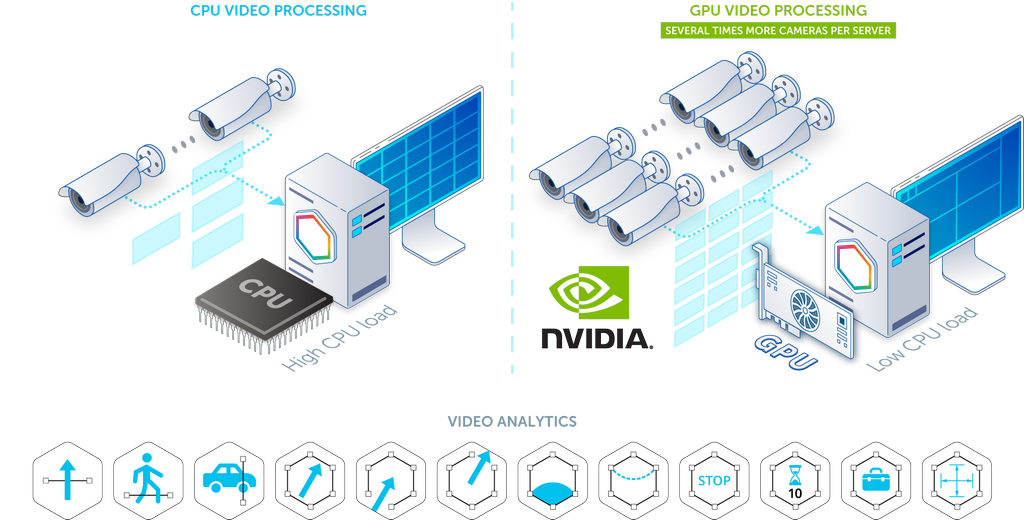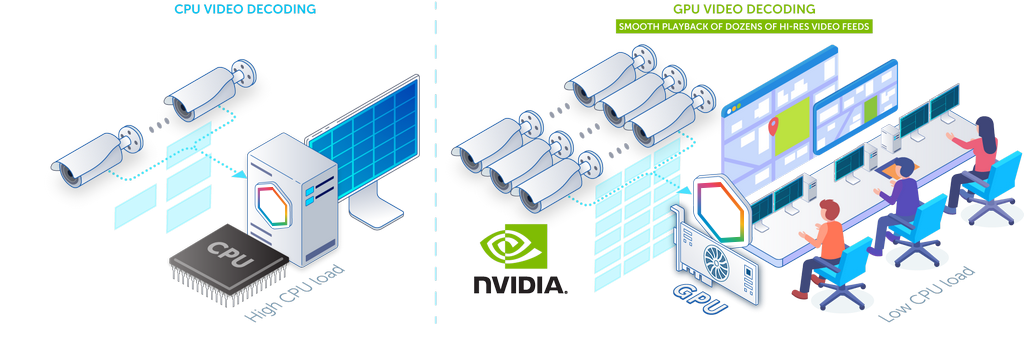
NVIDIA’s invention of the GPU in 1999 sparked the growth of the PC gaming market, redefined modern computer graphics, and revolutionized parallel computing. More recently, GPU deep learning ignited modern AI — the next era of computing — with the GPU acting as the brain of computers, robots, and self-driving cars that can perceive and understand the world.
Development of Joint Solutions
AxxonSoft uses the NVIDIA TensorRT SDK to port AI video analytics algorithms to NVIDIA GPUs and optimize their performance. TensorRT unleashes the full potential of NVIDIA tensor-core GPUs and supports the latest microarchitectures. NVIDIA computing platforms can multiply the performance of AI analytics compared to CPU-only systems.
How AxxonSoft VMS Utilizes NVIDIA GPUs
Application of NVIDIA graphics accelerators for the most demanding video processing tasks on the server and client sides helps increase VMS performance, reducing hardware expenses and power consumption.

Video Analytics Acceleration
Video analytics places a significant computing load on the VMS server. The first resource-intensive task is decoding video feeds transmitted by IP cameras. To handle it effectively, Axxon One VMS supports hardware video decoding on NVIDIA GPUs, after which the video can be processed with standard or neural network video analytics.
The second demanding task is running video analytics algorithms, especially AI-based ones. For AI acceleration, Axxon One can utilize various NVIDIA GPUs. To maximize performance, several graphics accelerators for video decoding and AI algorithms execution can be installed on the server.
Thanks to hardware computing acceleration, the server can process several times more video streams when using video analytics. Reducing the number of servers streamlines the architecture of an intelligent video surveillance system, decreasing capital expenditures and maintenance costs.

Decoding Video for Display
Axxon One client can utilize NVIDIA graphics cards for video decoding during display. This enables smooth playback of dozens of Full HD video feeds, including H.265, without additional CPU load. Thanks to this, you can use higher-resolution monitors, display more camera videos on the client screen, or employ client computers with lower-performance CPUs. Client-side hardware video decoding also makes it possible to build large video walls based on just a few computers of average CPU performance.